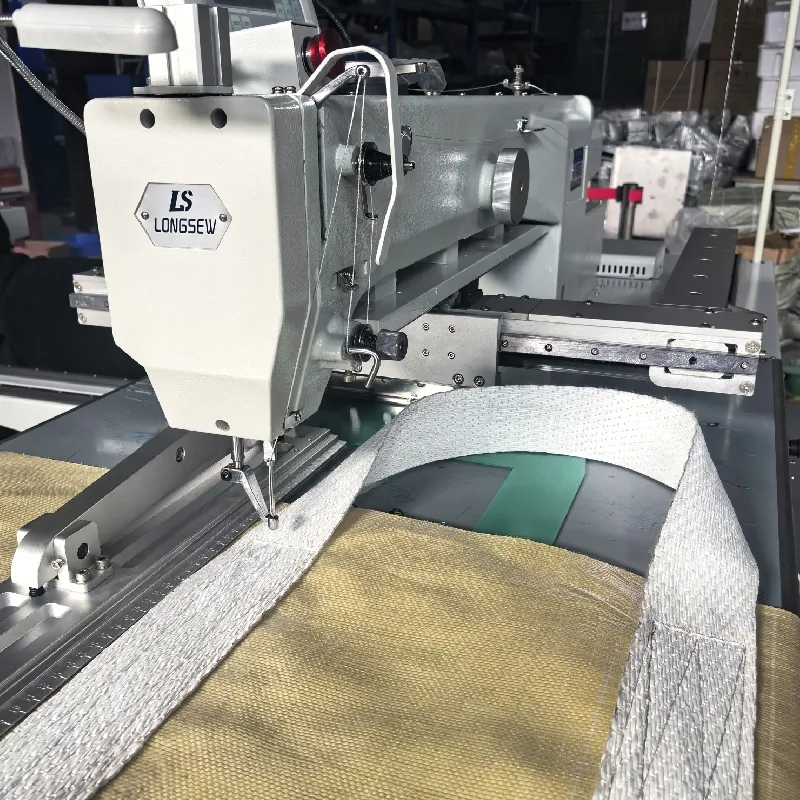Versatile Walking Foot for Sewing Machines to Enhance Your Quilting and Sewing Projects
The Importance of a Generic Walking Foot for Sewing Machines
Sewing has long been an essential skill, whether for crafting garments or creating home décor. One of the most useful attachments for a sewing machine is the walking foot. This invaluable tool plays a vital role in ensuring smooth, even feeding of multiple layers of fabric, particularly when working with slippery or thick materials. In this article, we will explore the features, benefits, and practical uses of a generic walking foot for sewing machines.
A walking foot, also known as an even-feed foot, is designed to grip the top layer of fabric while the feed dogs at the bottom move the lower layer. This synchronized feeding mechanism helps eliminate the common issue of fabric shifting, which can lead to misaligned seams and uneven stitching. For both amateur and professional sewists, having a walking foot can significantly improve the quality of their work.
One of the primary advantages of a generic walking foot is its versatility. It is compatible with a vast array of sewing machines and can be used on various fabric types, from quilt layers to delicate silks. A generic version often comes at a fraction of the cost of brand-specific attachments, making it an economical option for those looking to enhance their sewing capabilities without breaking the bank.
When it comes to heavy projects like quilting or sewing upholstery, a walking foot becomes indispensable. The even feeding it provides ensures that multiple layers are stitched together evenly, preventing puckering and distortion of the fabric. This feature is especially important for quilters, who often work with multiple layers in their projects. With a walking foot, quilters can achieve professional-looking results without the frustration often associated with handling thick materials.
generic walking foot for sewing machine

Beyond quilting, a walking foot is also beneficial for sewing knits and stretch fabrics. These types of materials can easily slip and slide during the sewing process, leading to uneven seams. The walking foot helps maintain alignment, resulting in beautifully finished garments that fit well. For sewists who frequently work with various fabrics, having a walking foot in their toolkit can make all the difference.
Assembling a walking foot onto a sewing machine is a straightforward process. Most generic walking feet come with easy-to-follow instructions, enabling sewists of all skill levels to attach and start using them quickly. Once it is in place, users will also appreciate the foot's adjustable height feature, which allows for easy handling of different fabric thicknesses without changing the presser foot.
In addition to its primary functions, a walking foot can also alleviate the strain on your hands and wrists. Because it allows for smoother movement of the fabric, sewists can focus on guiding their material without exerting extra force. This ease of use can lead to longer, more enjoyable sewing sessions, which is particularly appealing for those who take on large projects.
In conclusion, investing in a generic walking foot for a sewing machine is a wise decision for anyone serious about their sewing projects. The advantages it offers—such as improved fabric feeding, versatility across different types of projects, and ease of use—make it an essential tool in the arsenal of both novice and experienced sewists. Whether you're tackling quilts, garments, or home décor projects, a walking foot will help elevate your sewing experience to new heights. With this handy attachment, you can sew with confidence, knowing that you'll achieve the beautiful, professional-quality results you desire.
-
Leather Sewing Machine: The Industrial Standard for Tough MaterialsNewsJul.18,2025
-
Sail Making Machine: Heavy-Duty Stitching for Industrial and Marine NeedsNewsJul.18,2025
-
Sling Sewing Machine: The Backbone of Heavy-Duty FabricationNewsJul.18,2025
-
Leather Sewing Machine: Precision for Heavy-Duty StitchingNewsJul.18,2025
-
Big Bag Sewing Machine: Powering the Future of Bulk PackagingNewsJul.18,2025
-
FIBC Sewing Machine: Essential Equipment for Bulk Bag ProductionNewsJul.18,2025
-
Heavy Duty Leather Sewing Machine: A Must-Have for Professional LeatherworkNewsMay.28,2025





























